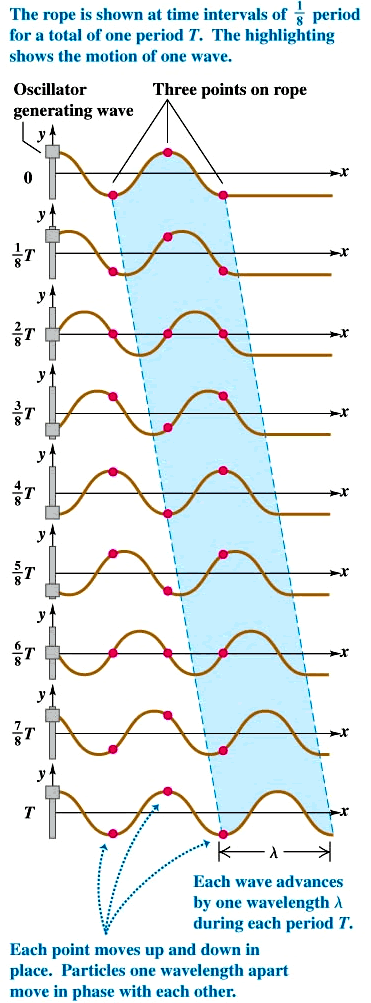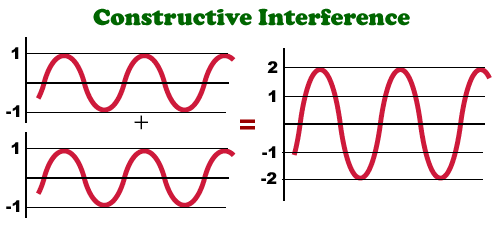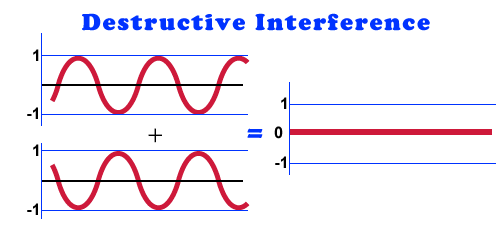
The medium itself does not travel as a wave. Its constituent particles undergo back and forth/up and down motion around an equilibrium point.
What does travel is the pattern of the wave disturbance. We have to put energy into a system to set the wave in motion.
Waves transport energy from
one place to another.
Waves do not transport matter from
one place to another.
The disturbance travels with a definite speed determined by the mechanical properties of the medium.





Periodic Motion






From a fixed end the incident wave will reflect 180° out of phase. The reflected wave will be inverted.
From a free end the incident wave will reflect in phase. The reflected wave will not be inverted.
Superposition of Waves
Interference is a Wave Phenomenon

Interference of two waves is a very simple concept. And, an even easier one to calculate. Simply add each point in the same place on each wave to get the resultant wave.
When two waves are both peaking at the same time in the same place they will Constructively interfere.
If one wave is peaking in one direction and the other wave is peaking in the opposite direction they will
Destructively interfere.
This concept of interference is incredibly important and philosophically rich.











Police Car Sound, Car Horn,
When a source of sound or the the listener are in relative motion with one another the frequency heard by the listener is not the same as the frequency of the source.


